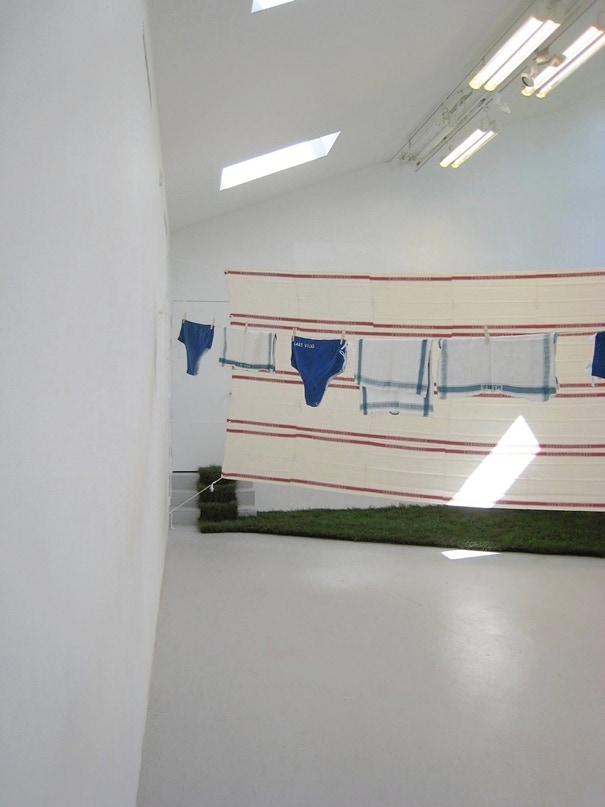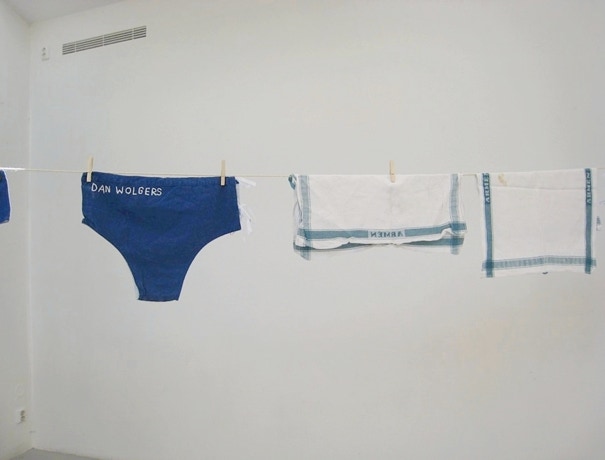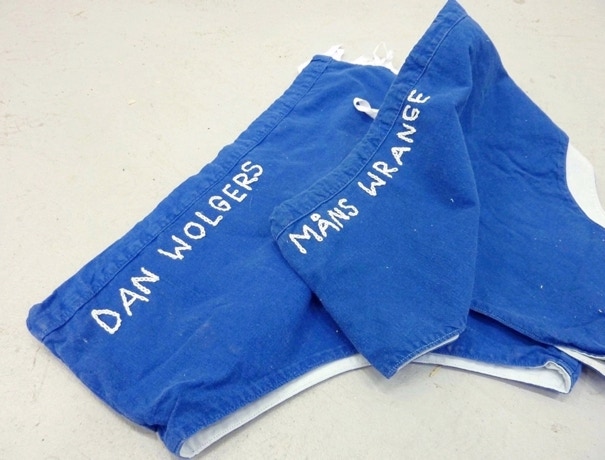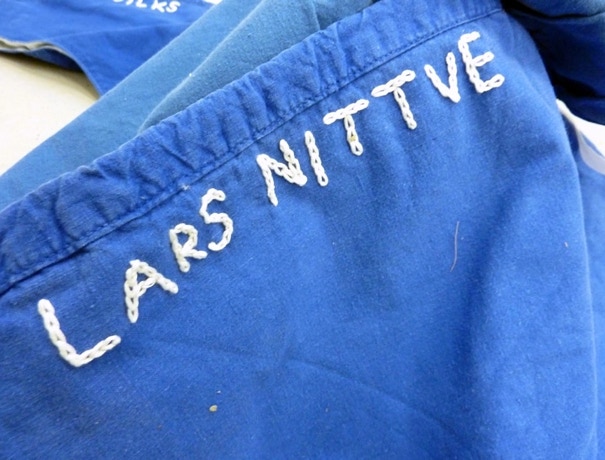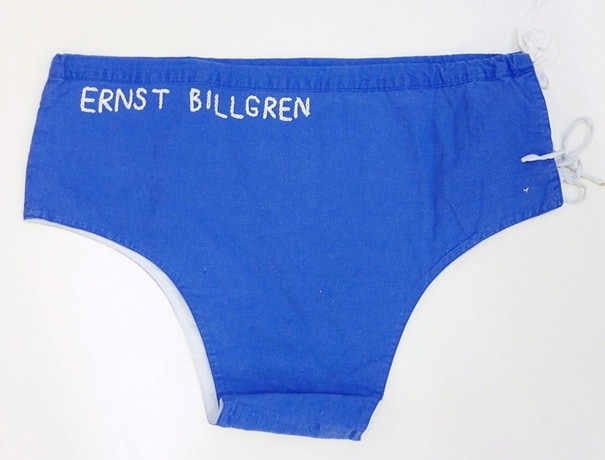Konstens sak är vår
Installation, 2009.
Sound from the installation:


En installation som består av försvarets gamla badbyxor som har broderats med olika namn hämtade ur den svenska konstscenens självutnämnda elit. Exempel på namn är Jan Håfström, Måns Wrange, Lars Nittve, Ernst Billgren, Lars Bohman, Lars Vilks, Carl Johan De Geer, Peter Dahl, Jockum Nordström, Dan Wolgers och Pontus Bonnier. Dessa hänger tillsammans med försvarets handdukar på ett klädstreck. Bakom det sicksackade klädstrecket tornar en vägg upp bestående av försvarsmaktens kökstextilier hopsydda till ett stort lapptäcke uppspänt mellan rummets två långsidor. Bakom textilväggen finns en grön gräsmatta som breder ut sig och leder en väg in bakom en dörr. Till installationen finns ett ljud som består av ett uppmanande tal som uppläses av en kvinnlig röst. Talet är en vägledning som med militärisk disciplin och styrka ska framföra en bild av samtidskonstens villkor och regler, fast i en skruvad version som körts genom ett 30-talsfilter.
Manuset till talet kommer från 1928 års upplaga av soldatinstruktioner för infanteriet. I denna bok står det hur en god soldat skall agera och uppföra sig i olika situationer. Jag har bearbetat texten så att soldaten har ersatts med konstnären. Detta fick mig att inse de slående likheterna mellan militärväsendet och den slutna konstvärlden. Vilket i sin tur skapar fantasier om att de ovannämnda namnen skulle vara en soldatarmé och textilväggen en militärdiktatur, våldsyttring eller politisk maktutövning.
English
An installation that consists of the Swedish Armed Forces old swimming trunks that have been embroided with different names taken from the self-appointed elite of the Swedish art scene. For example Jan Håfström, Måns Wrange, Lars Nittve, Ernst Billgren, Lars Bohman, Lars Vilks, Carl Johan De Geer, Peter Dahl, Jockum Nordstrom, Dan Wolgers and Pontus Bonnier. These are combined with the Armed Forces towels on a clothes-line. Behind the zigzagged clothes-line you find a wall consisting of the Armed Forces kitchen textiles sewn into a large patchwork stretched between the two long sides of the room. Behind the textile wall is a green lawn that spreads and leads a way behind a door. To the installation there is a sound that consists of an urging speech held by a female voice. The speech is a guide with military discipline and strength that will convey an image of contemporary art's terms and conditions, but in a twisted version that’s been run through a 30-century filter.
The script of the speech comes from the 1928 edition of the soldier's instructions for the infantry. The book tells you how to be a good soldier, how to act and behave in different situations. I’ve processed the text so that the soldier has been replaced with the artist. This made me realize the striking similarities between the military and the world of art. Which creates fantasies about the mentioned namnes, that they are a soldier's army and that the textile wall depicts a military dictatorship, violence or political power.
